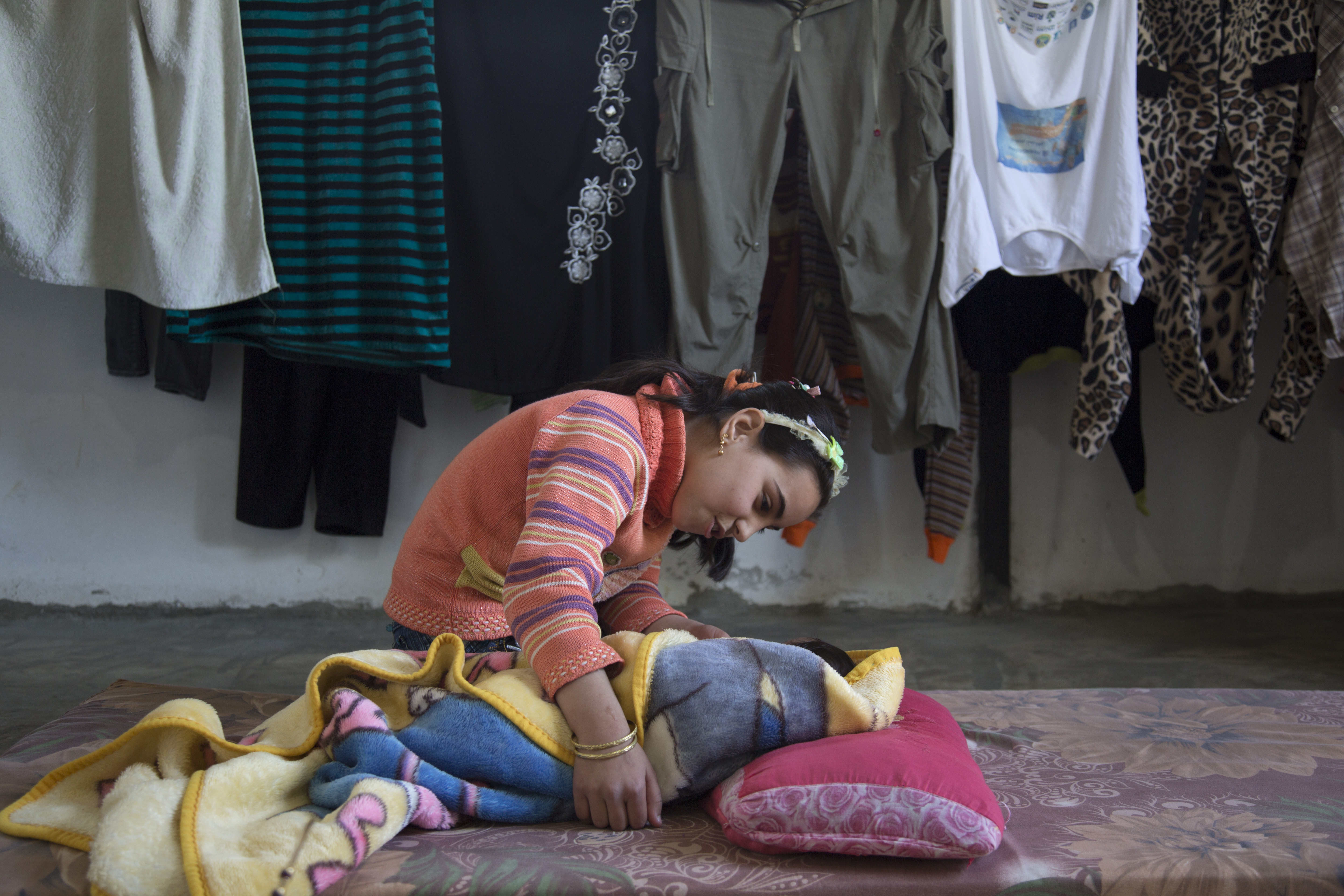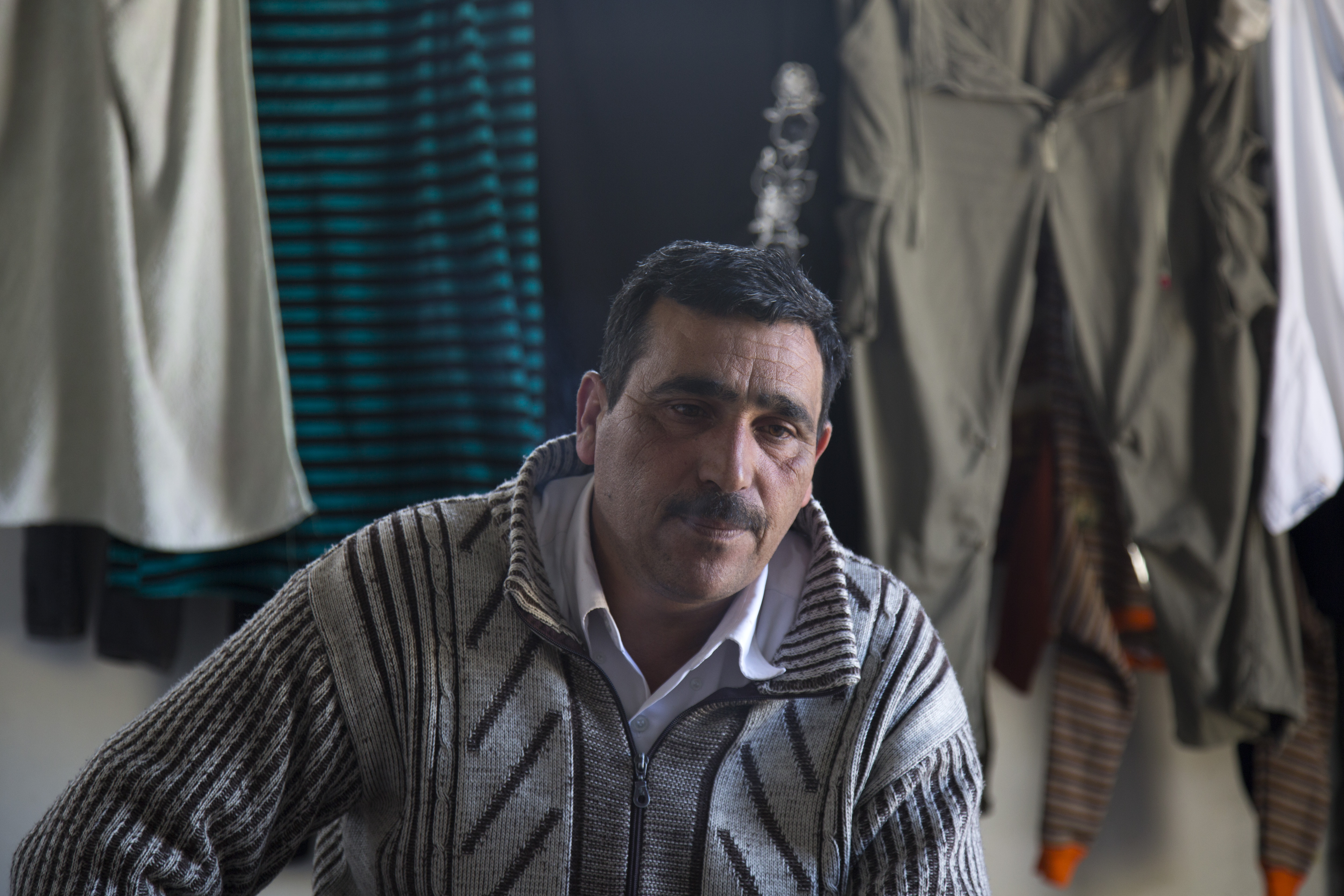I belong in class - Diyar in Lebanon
As Syria faces a fifth year of war, the voices of the most vulnerable are being stifled. Millions of displaced Syrian children, adolescents and young adults, especially those denied their equitable right to education risk becoming part of the “lost generation” – a major challenge to the future reconstruction of Syria.
Millions of Syrians have managed to flee to neighboring countries, such as Lebanon, which according to UNHCR hosts almost 1.2 million registered refugees. The agency reports that more than 387,000 of them are children between Grades 1 and 12, and that many of them struggle to be included in formal classrooms. Many are destitute and in dire need of psychosocial support. Lebanon - a small country with limited space and resource –has been struggling with the influx.
Meanwhile, the streets of Beirut and other Lebanese cities are increasingly filled with the voices of desperate Syrian refugee children forced to beg or work, some of whom are as young as five years old.
These children, whose futures should be shaped in the safe environs of a classroom, have for years been denied their right to education. Many of them, accustomed to the sounds of bombardment from their earliest years, have never had the chance to attend school.
Nine-year-old Diyar had a very brief glimpse into a normal childhood. He attended school for just one day in his hometown of Homs before his mother, Samar, was informed that the security situation in the Syrian city was no longer safe. The school shut down indefinitely, and the family fled to Lebanon. Diyar, who has been working on the streets of Beirut to support his mother and younger siblings for the past two years, has been forced to build a tough exterior. Although mature beyond his years, he has no doubt that he "belongs in the classroom.”
While thousands like Diyar are on the streets in countries bordering Syria, many other children remain displaced within Syria. According to the latest statistics from UNESCO Institute for Statistics, one in every 10 Syrian children lives in a conflict zone and without access to schooling. According to UNICEF, Syria is deemed one the most "dangerous countries on earth to be a child." 
As the number of internally displaced Syrians has skyrocketed over the past two years, so has the number of those fleeing Syria to neighboring countries.
Tens of thousands of these children and adolescents are striving to salvage what remains of their childhoods. Through informal educational initiatives, supported by the UN and humanitarian agencies like the Norwegian Refugee Council, tens of thousands are filling long gaps in their education. For Imane and her three younger brothers, it’s their first time setting foot in a classroom.
Jamal left Syria in 2012 with his wife and four children. Constant bombardment that reigned over their daily lives made it impossible for his children to attend school and Jamal to find work. Finally, a bomb struck the roof of their home while the family was eating dinner, changing their lives permanently.
“Radia, my youngest who was only a few months old, was suckling her mother the moment the bomb hit,” said Jamal.
Much of what followed was a blur to Jamal, though he vividly remembers a layer of white dust covering the entire home, including his family’s bodies. “I thought I was dead,” he recalled.
When he looked over at his family, he heard his wife shrieking amid the rubble over her last breaths: "Please look after our kids.” The infant in her arms no longer moved.
The bodies of his four surviving children were riddled with shrapnel. But they were unable to be fully treated at a local hospital’s over-crowded emergency ward, where fresh victims of bombings were being rushed in. Jamal had little choice to but to return with his children to their ruined home.
Months after the incident, Jamal re-married and fled Syria, ending up in a small community in the outskirts of Tripoli, Lebanon. But the children have yet to recover from their trauma. The lesions caused by shrapnel remain on their bodies reminding them constantly of the incident. All four children need long-term treatment for internal injuries.

Jamal from Homs is amongst those forced to flee conflict and near-death experiences in Syria. He left with his four children and wife in 2012, while his fifth child was born in Lebanon.

The four children who have never attended school are in dire need of psycho-social support to heal from trauma of conflict. Without access to long term formal education, they risk becoming part of the lost generations of Syrian youth.

Imane and her brothers are receiving non-formal education at a local school run by Norwegian Refugee Council that is in turn supported by UN agencies. They attend the school twice a week and hope to become part of a "real classroom" some day.

While non-formal education is a start, without transitioning to a Lebanese school, these children will not receive a recognized diploma. Hundreds of thousands of other Syrian students who attended school before conflict are often unable to prove their standing because of missing records.

Ahmed and Shadi enjoy attending school and playing with other children, but they have not yet dealt with the impact of the bombing that riddled their bodies with shards of shrapnel. Wounds from the incident have now become scars and one of the sibling walks with a limp.

Imane hopes to become a teacher so she can continue learning and imparting knowledge to others. She does not remember the incident of the bombing that claimed the lives of her mother and infant sister. Instead, she focuses on her "beautiful life" in Syria before the conflict.

Mona, born after the family fled to Lebanon, is currently stateless. According to UNICEF, 30,000 newborns in Lebanon risk statelessness, a condition that could deny them access to basic education.

While organisations like Norwegian Refugee Council are filling gaps in education, the government of Lebanon has asked for more support from the international community to accommodate the continuing influx of refugees and consequently dearth of space in classrooms.

Jamal made the unenviable decision of fleeing his home "with nothing on his back." Education and long term physical and psychological treatment for his children is what he wants most.
 Access to education for Syrian children born into the conflict has been a pressing concern for UN agencies. UNESCO has also called for more support for adolescent children who are most likely to drop out of school and students at higher levels of education who fall even lower in the priorities of the humanitarian community.
Access to education for Syrian children born into the conflict has been a pressing concern for UN agencies. UNESCO has also called for more support for adolescent children who are most likely to drop out of school and students at higher levels of education who fall even lower in the priorities of the humanitarian community.
None of Jamal’s four children ever attended school in Syria. But since their arrival in Lebanon, a non-formal educational initiative run by the Norwegian Refugee Council and supported by the UN has offered the children their first chance to be in a normal classroom.
Nine-year-old Imane, Jamal’s oldest child, is ecstatic. She would like to become a teacher so that she can continue to learn all her life whilst imparting knowledge to others.
While non-formal schooling is an essential step, a majority of the children lack the pre-requisite conditions in terms of official school records and skills but also financial support needed to enroll in Lebanese schools. This is the main educational challenge facing countries bordering Syria: ensuring that refugee children are integrated into the countries’ formal education systems, where they can learn, grow, and eventually earn officially recognized diplomas.
Video by Iason Athanasiadis - copyright UNESCO/Iason Athanasiadis
Photos by Dalia Khamissy - copyright UNESCO/Dalia Khamissy
Produced and written by Preethi Nallu






